The 10kg block is moving to the left with a speed of 1.2m/s at time t=0 A force F is applied kinetic friction is μk=0.2. Determine the time t at which the block comes to a slip. (g=10m/s2)
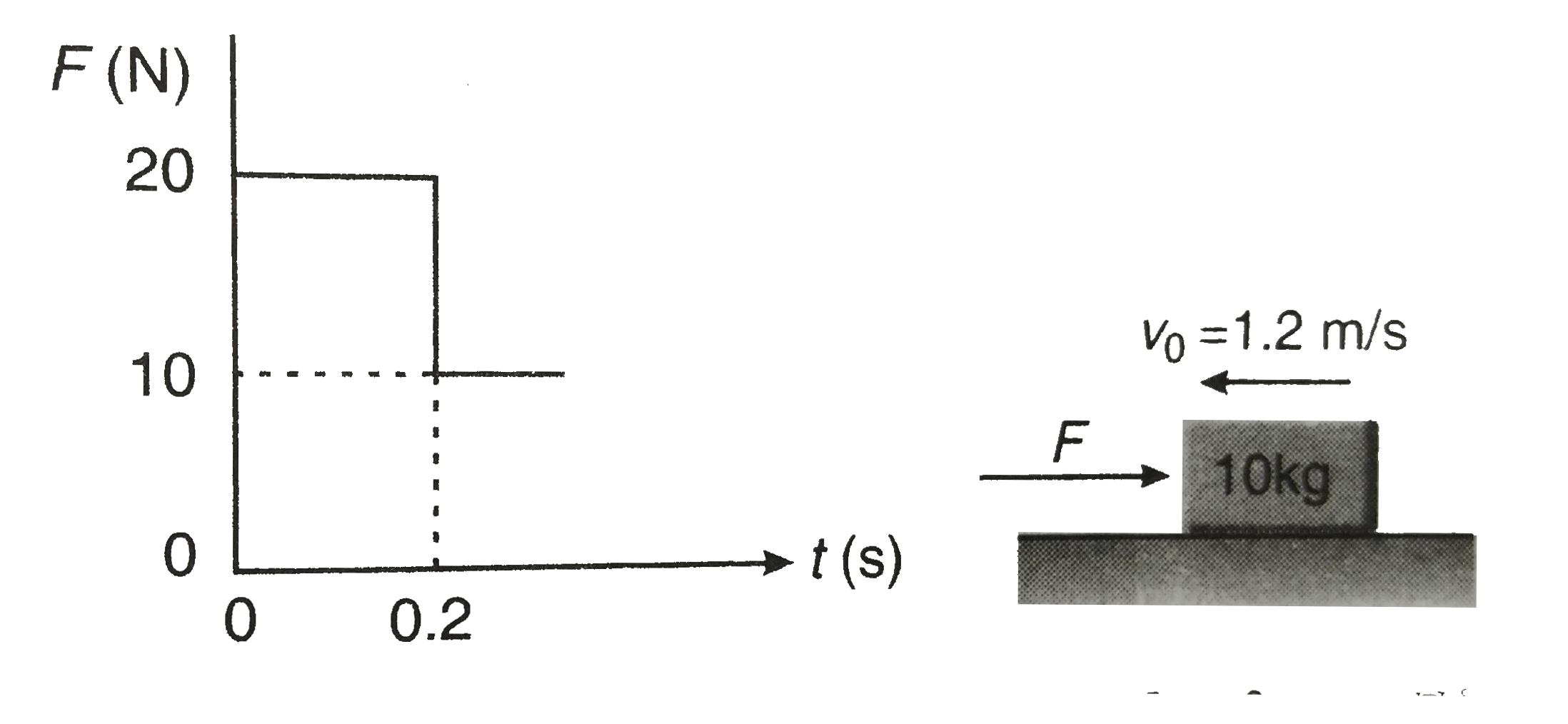
μkmg=0.2×10×10=20N For t≤0.2s
Retardation a1=F+μkmgm
=20+2010=4m/s2
At the end of 0.2s
v=1.2−4×0.2=0.4m/s
For t>0.2s
Retardation a2=10+2010=3m/s2
Block will come to rest after time
t0=va2=0.43=0.13s
∴ Total time =0.2+0.13=0.33s
Topper's Solved these Questions
- BOOK - DC PANDEY ENGLISHCHAPTER - LAWS OF MOTIONEXERCISE - Check point 5.120videos
LAWS OF MOTION
- BOOK - DC PANDEY ENGLISHCHAPTER - LAWS OF MOTIONEXERCISE - Check point 5.215videos
LAWS OF MOTION
- BOOK - DC PANDEY ENGLISHCHAPTER - LAWS OF MOTIONEXERCISE - Comprehension9videos
LAWS OF MOTION
- BOOK - DC PANDEY ENGLISHCHAPTER - KINEMATICS 1EXERCISE - INTEGER_TYPE15videos
KINEMATICS 1
- BOOK - DC PANDEY ENGLISHCHAPTER - LAWS OF THERMODYNAMICSEXERCISE - Level 2 Subjective18videos
LAWS OF THERMODYNAMICS
Similar Questions
A block of mass 2.00 kg moving at a speed of 10.0 m/s accelerates at 3.0 ms2 for 5.00 s. Compute its final kinetic enegy.
View SolutionThe 10kg block is resting on the horizontal surface when the force F is applied to it for 7s . The variation of F with time is shown . Calculate the maximum velocity reached by the block and the total time t during which the block is in motion. The coefficient of static and kinetic friction are both 0.50.(g=9.8m/s2)
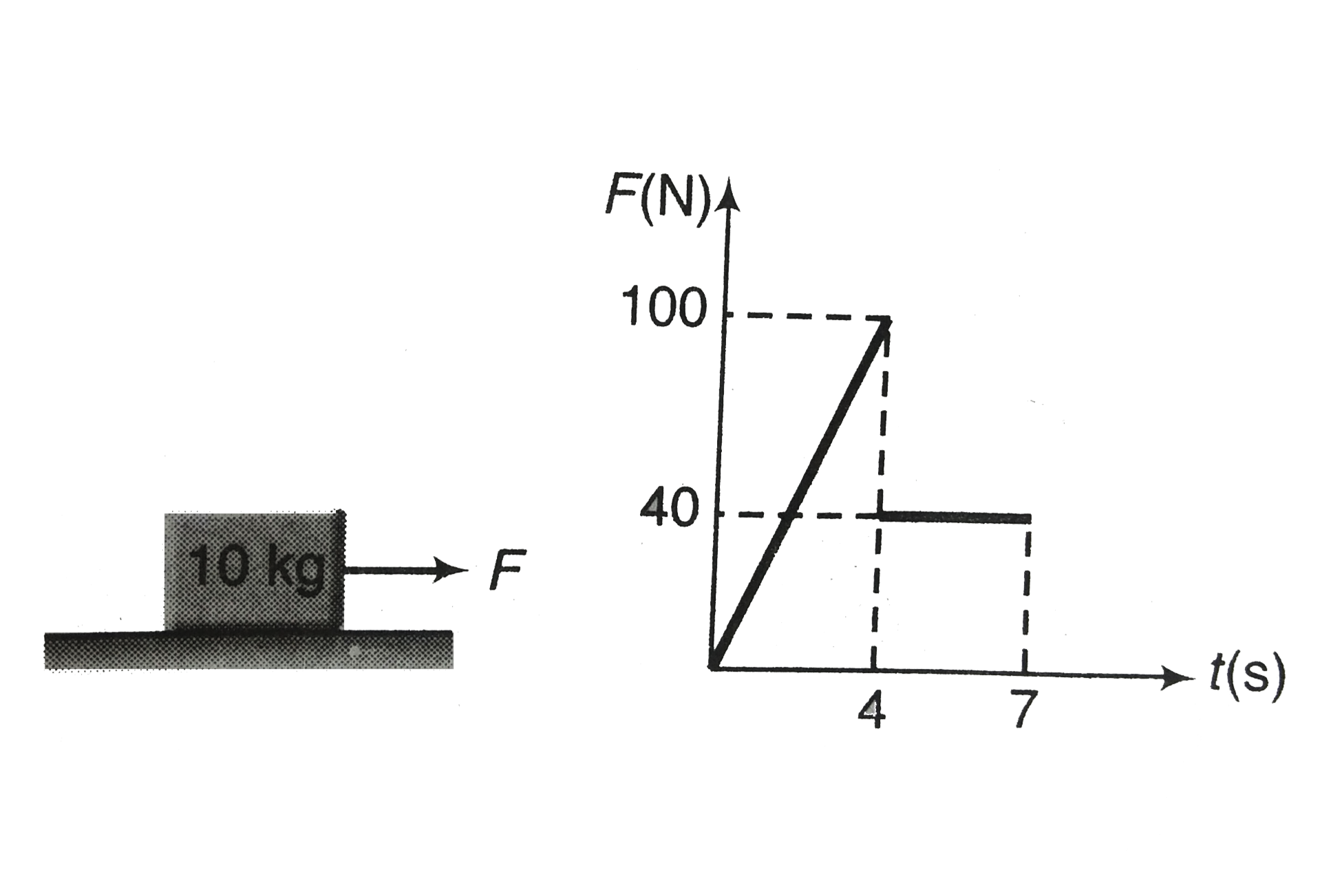 View Solution
View SolutionA block A of mass 2 kg rests on a horizontal surface. Another block B of mass 1 kg moving at a speed of m/s when at a distance of 16 cm from A. collides elastically with A. The coefficeint of friction between the horizontal surface and earth of the blocks is 0.2. Then (g=10m/s2)
View SolutionForce F is applied on upper pulley. If F = 30 t where t is time in second. Find the time when m1 loses contact with floor : (Take g=10m/s2)
 View Solution
View SolutionA block of 7 kg is placed on a rough horizontal surface and is pulled through a variable force F(in N) =5t, where 't' is time in second, at an angle of 37∘ with the horizontal as shown in figure. The coefficient of static friction of the block with the surface is one. if the force starts acting at t=0 s, find the time at which the block starts to slide. (Take g=10m/s2)
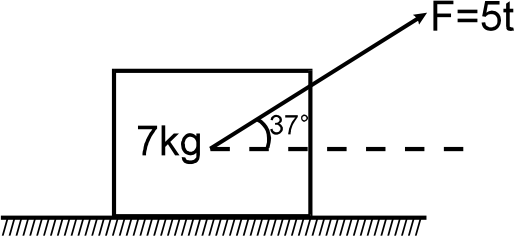 View Solution
View SolutionA block of 7 kg is placed on a rough horizontal surface and is pulled through a variable force F(in N) =5t, where 't' is time in second, at an angle of 37∘ with the horizontal as shown in figure. The coefficient of static friction of the block with the surface is one. if the force starts acting at t=0 s, find the time at which the block starts to slide. (Take g=10m/s2)
 View Solution
View SolutionIn the figure shown m1=1kg,m2=2kg, pulley is ideal . At t = 0 , both msses touches the ground and string is tout . A force F = 2t is applied to pulley ( t is in second ) then m1 is lifted off the ground at time ( g = 10 m/s2)
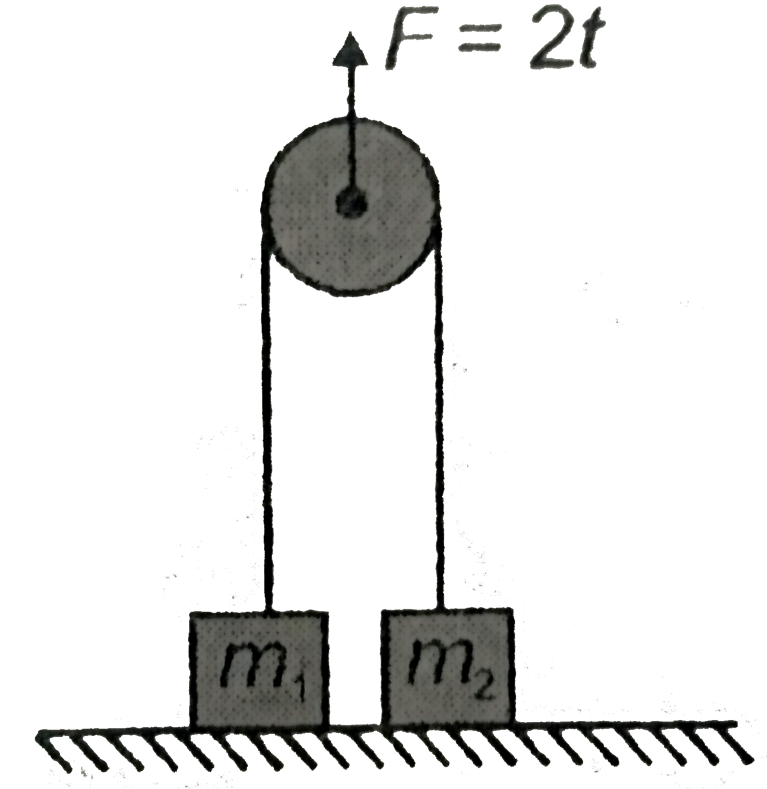 View Solution
View SolutionA block B is pulled by a force of 18 N applied to a light pulley as shown in the figure. If the coefficient of friction is 0.4 and the acceleration of the block is 0.5 ms−2 , the mass of the block is (g=10m/s2)
 View Solution
View SolutionA block of mass 2 kg is placed on the floor . The coefficient of static friction is 0.4 . If a force of 2.8 N is applied on the block parallel to floor , the force of friction between the block and floor is : (Taking g = 10m/s2)
View SolutionBlock B rests on surface . If the coefficient of static friction between A and B is μ=0.4. Determine the acceleration of each , if
(a) F=30N and
(b) F=250N(g=10m/s2)
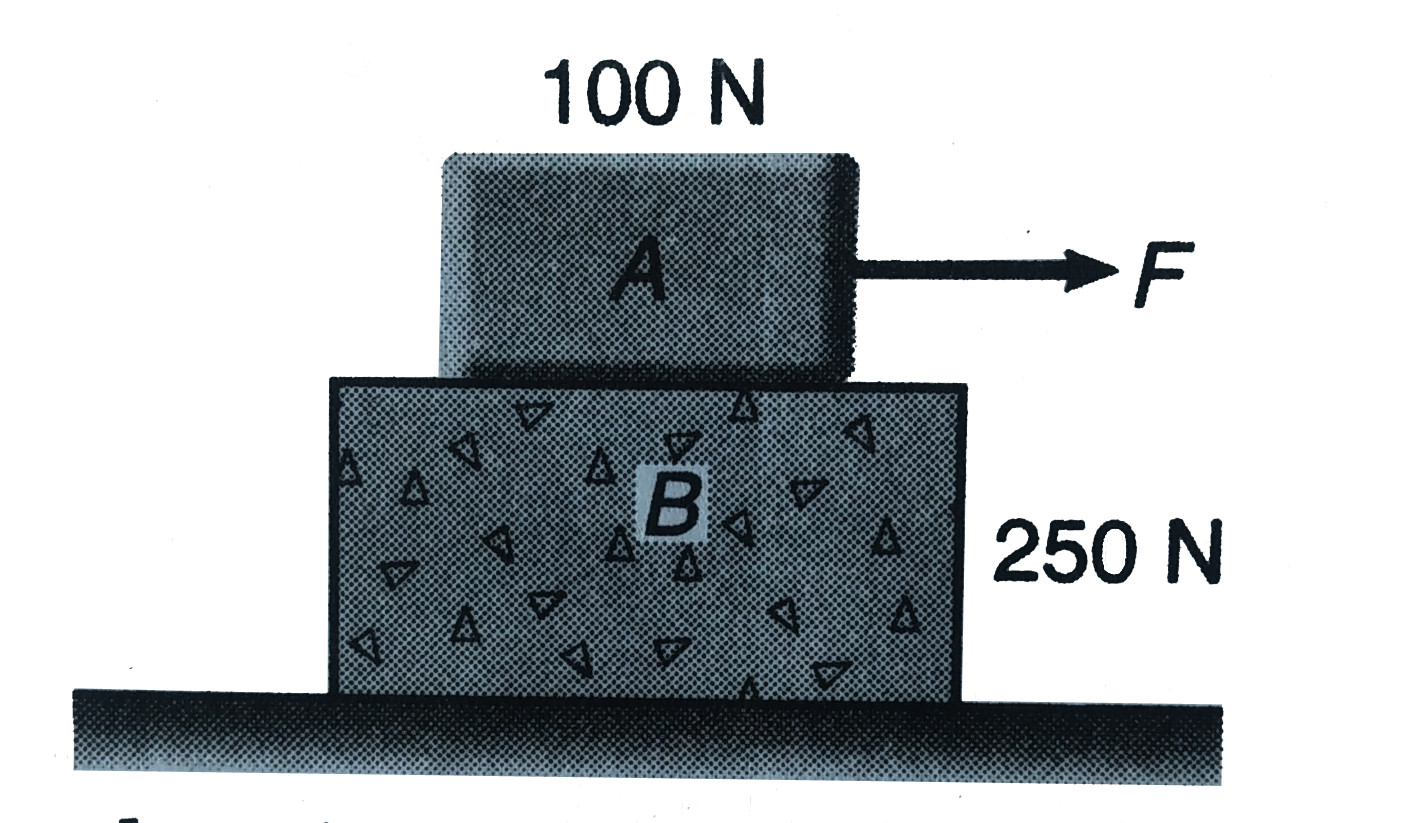 View Solution
View Solution

